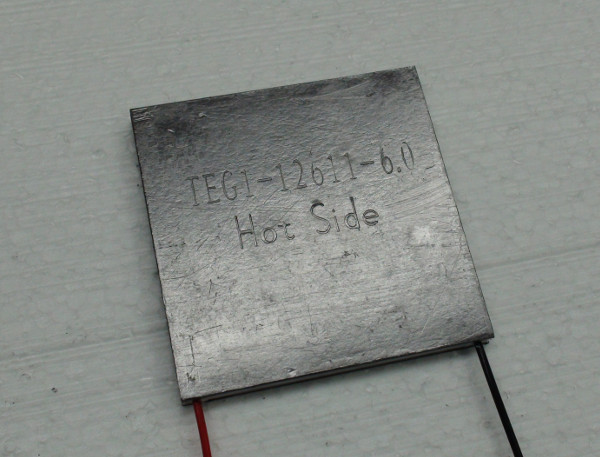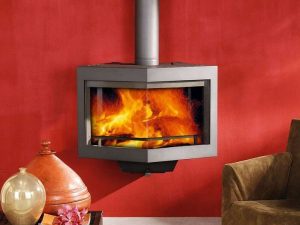Have you come across thermoelectric generators (TEGs)? They are a way of generating electricity from heat, using the ‘Seebeck effect’ – so, for example, they can be strapped to the side of a wood stove to provide electricity for lighting. There are companies developing them for cookers and even computers to harness waste energy. Below is the account of our Patrick from Goat Industries of his experiments with TEGs. It sounds as though they’re not quite there yet, but one to look out for in future. Over to Patrick (and I think he’s joking about his 46″ TV)…………….
I first started messing about with thermoelectric generators (TEGs) about a year ago when the weather started to turn cold and I needed to start using my wood burner and could do a lot of testing whilst simultaneously enjoying the heating benefits. Having said that, trying to get my wood burners up to 325 degrees C on the TEG’s hot side proved to be a real mission and regularly involved cranking up the burner until it started glowing red on the sides whilst sweating profusely in shorts and T shirt with all the doors and windows open! With an infra-red thermometer in hand and looking at the colours left behind on the steel itself, it seemed like some pretty massive temperatures were being generated, but the hot side of the TEG just would not get hot enough, easily enough. Of course, this was much to do with the chunky aluminium coolant blocks on the cold side which are generously endowed with internal tappings for coolant flow, so I should not complain too much.

At 250 degrees C the woodburner is powering 10 x 10 watt 12v DC floodlights with an output of 11.5v.
In any case I was fairly confident that heat was flowing quite nicely from the hot side of the TEG to the cold aluminium block and that I should be getting close to near optimum conditions. The only problem after this was ….. Oooops ….. Not much power output. The TEG cells that I was using were rated to 20 watt each at 325 hot side and 30 cold side with a matched load and I could not get anywhere close to that – best I ever got was 12 watts – how disappointing! Very soon I was wishing that I had one of those £10,000 test rigs that they developed at Glasgow university but is so ‘hush hush’ that nobody is allowed to know how they work. So a massive Dead-end right ahead of me, capital D.
So now that we are back at the beginning of the cold season again after the lovely warm summer we have had I have indeed got some fresh ideas. Firstly, I really can’t think of any way that I could have improved my own test rigs and ultimately they do actually represent real life scenarios rather than a laboratory. Secondly, is 12W per cell really that bad? Probably not. Thirdly, am I going to go crazy and cover my wood burner in TEG cells this Winter to run my home – certainly not! To do this I would be burning a massive amount of timber and creating far too much heat for comfort and on tick-over the wood burner would be producing fairly minimal power, something like 80 watts from 30 TEGs. After all, I do have the good old grid on tap so it just seems a lot easier to use that for now.
But where does the future of TEGs lie? Actually, it looks pretty good and speculators in the industry reckon that there is a major technology advance due in about 2 years time which would give about 5 times the current efficiency and in 5 years time another new breed of TEGs giving something like 10 times the efficiency of my lowly test rig. So if I could generate 800 watts from my wood burner on tick over, that would be a lot more meaningful to me. I think that it wont be too long before I can power my huge 46″ TV and quadraphonic sound system (not) on old pallets for fuel!



